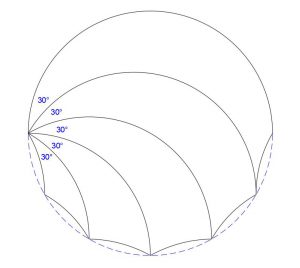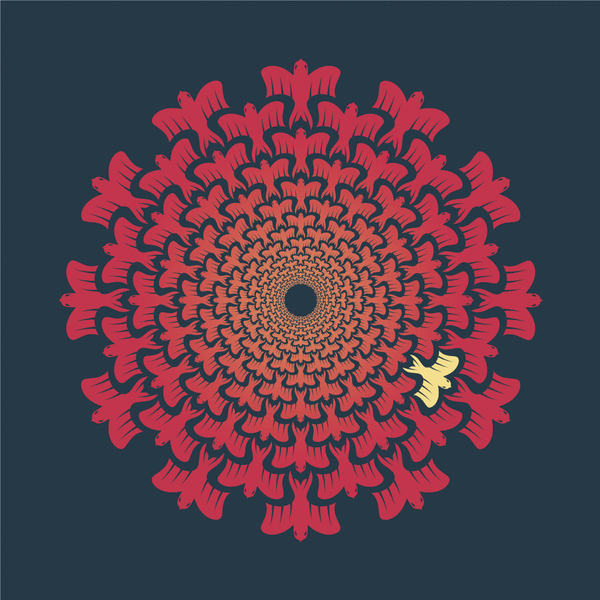Maths Week England happened a couple of weeks ago. I had put my name on the speaker directory, and sure enough a maths lead from a primary school in County Durham emailed me to ask if I could go in and do something for them.
You're reading: Posts Tagged: tessellation
Combining Tricurves
In July, guest author Tim Lexen wrote about his discovery of the tricurve, a shape made of arcs that has some interesting properties. He’s written a follow-up in which he explores them further. For a discussion of tiling with curve-sided shapes in general, see Tim’s MathBlog post.
Tricurves can be combined when the large, convex arc of one fills a concave space of another. A tricurve can be thought of as a shape that fills a concave arc with two smaller arcs of the same total length. In each case the new arcs stay within the boundaries of the original structure: touching the same bounding arc. This could go on repeatedly (see below) but we’ll focus here on joining two tricurves. Like the tricurves, assuming agreeable angles, the combined shape will often be able to tile the plane periodically, non-periodically, and radially with itself and related shapes.
Tessellation Art by Chris Watson
Chris Watson has written in to tell us about his site, Tessellation Art, where he sells his heavily Escher-inspired prints. They’re available in a range of sizes and media, and quite affordably priced. I particularly like the print above, titled Vortex.


